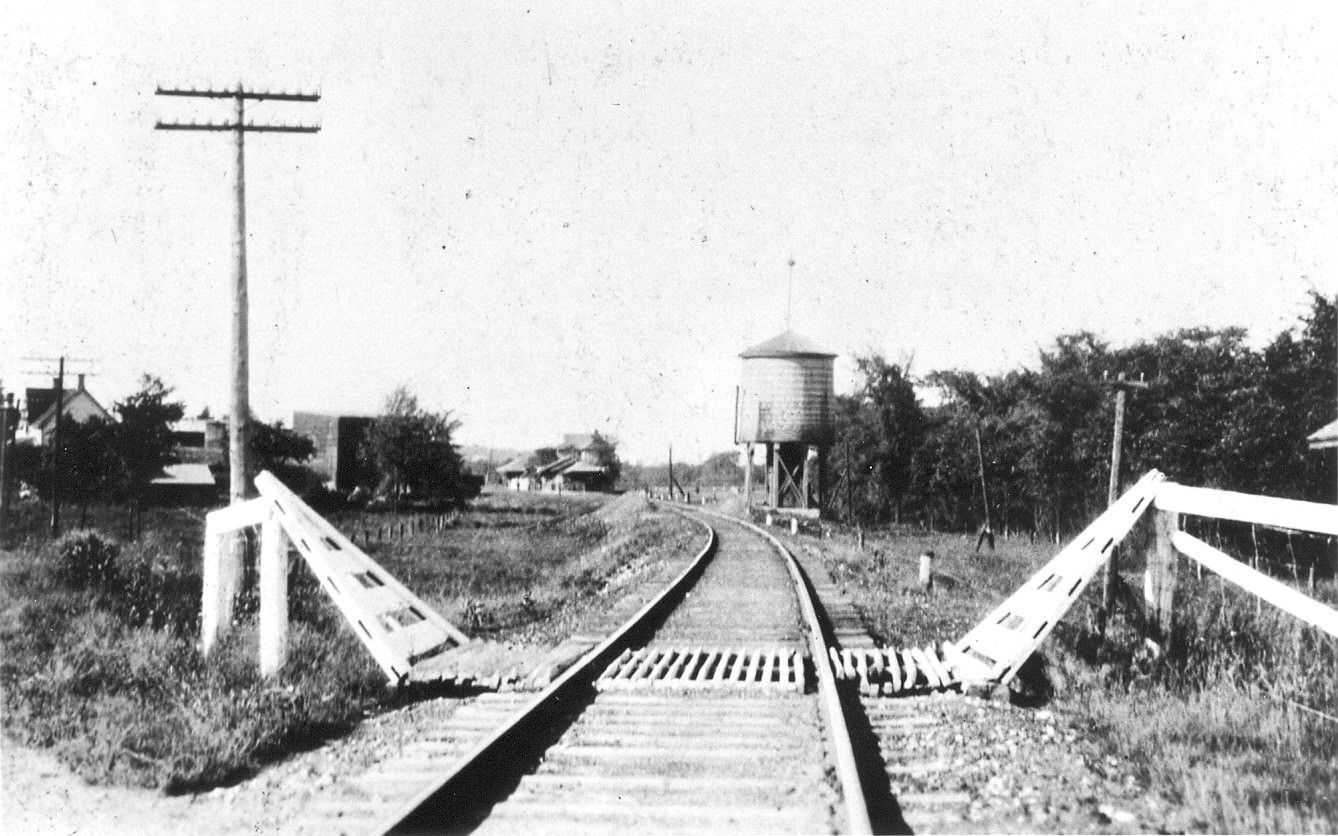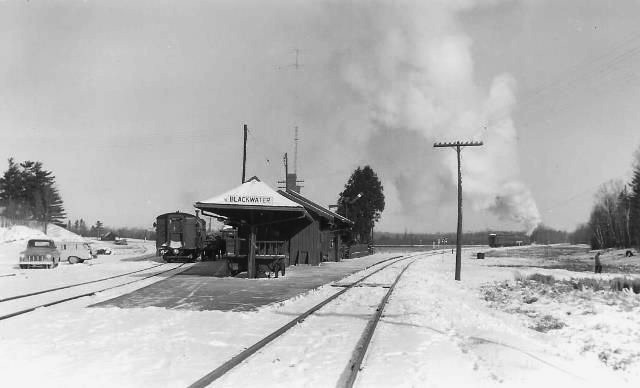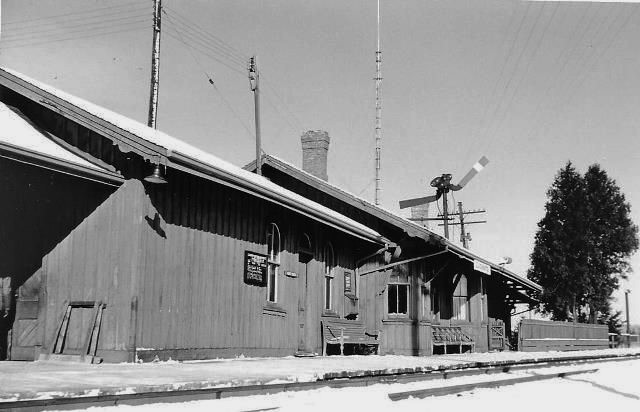Summary
The first station in the Blackwater area was built by the narrow-gauge Toronto & Nipissing Railway while its construction was progressing north towards Coboconk. While no photos are known to exist of this station, it was likely a small wooden structure located along the 2nd Concession. Located approximately 2.8 kilometers south of the modern-day community of Blackwater, the station was originally called Wick after the nearby post office. It likely saw few passengers due to the rural and unpopulated surroundings of the area, though it would grow in importance in the coming decades.
Narrow gauge soon fell out of favour in Canada and the financially burdened Toronto & Nipissing sought to merge with the nearby Midland Railway of Canada. As negotiations were ongoing in 1881, the Midland Railway financed the completion of a third rail to support standard gauge trains along the southern part of the Toronto & Nipissing. It was officially merged into the Midland Railway on April 1st, 1882, along with several other struggling branch lines. Work soon began on establishing several connections between the Midland Railway’s new acquisitions to form a direct route between Toronto and Belleville. A junction was created north of Wick at Blackwater with the new line extending east to the former Whitby, Port Perry & Lindsay Railway at Manilla, opening to traffic in early 1883. The station at Wick was then abandoned, and a new one constructed inside the junction immediately to the east of what is now Highway 12. Just a year later on January 1st, 1884, the Midland Railway was leased by the much larger Grand Trunk Railway who would ultimately gain full control of it. The station at Blackwater Junction saw a total of six trains per day by 1886, two of which ran to Coboconk while the rest went to or from Lindsay. The community of Blackwater sprung up around the station in the following years as access to converging railway lines brought more potential prosperity.
The second station was seemingly modified over the years and due to a lack of early photographs it’s hard to know what it would have looked like. At one point it would have contained a restaurant, but this part of the station was removed in 1941. The Grand Trunk would encounter financial difficulties into the early 1900’s, culminating in its nationalization and subsequent merger into Canadian National in 1923. As automobiles started to appear during the early 20th century, branch line passenger ridership was one of the first things to feel the effects. Several old stagecoach routes in the area were turned into provincial highways in the 1920’s, allowing for a higher amount of car traffic and at faster speeds than before. Service to Blackwater would decrease from eight departures per day in 1922 to just three in 1961. The station was closed to passengers later the same year and it was dismantled towards the end of the 1960’s.
Both railway lines that were served by Blackwater Station remained in use by Canadian National for local freight service in subsequent decades. The line to Coboconk was truncated to Woodville in 1965, then abandoned altogether in 1986. The line between Uxbridge and Lindsay remained in use until 1991 and it was subsequently torn up. Both lines have since been converted to recreational trails, with the former line to Coboconk now forming the Beaver River Wetland Trail and the line to Lindsay forming a leg of the Trans-Canada Trail. An information board with a large “Blackwater” sign above it now occupies the station property.
Condensed Station Info:
| Location: | Served By: | Current State: | Date Built: | Date Demolished: |
| Near Highway 12 and Blackwater Road | T&N (1871 – 1882) MRC (1882 – 1884) GTR (1884 – 1923) CNR (1923 – 1961) | Demolished (Both) | 1871 (first) 1883 (Second) | 1883 (First) 1967 (Second) |




